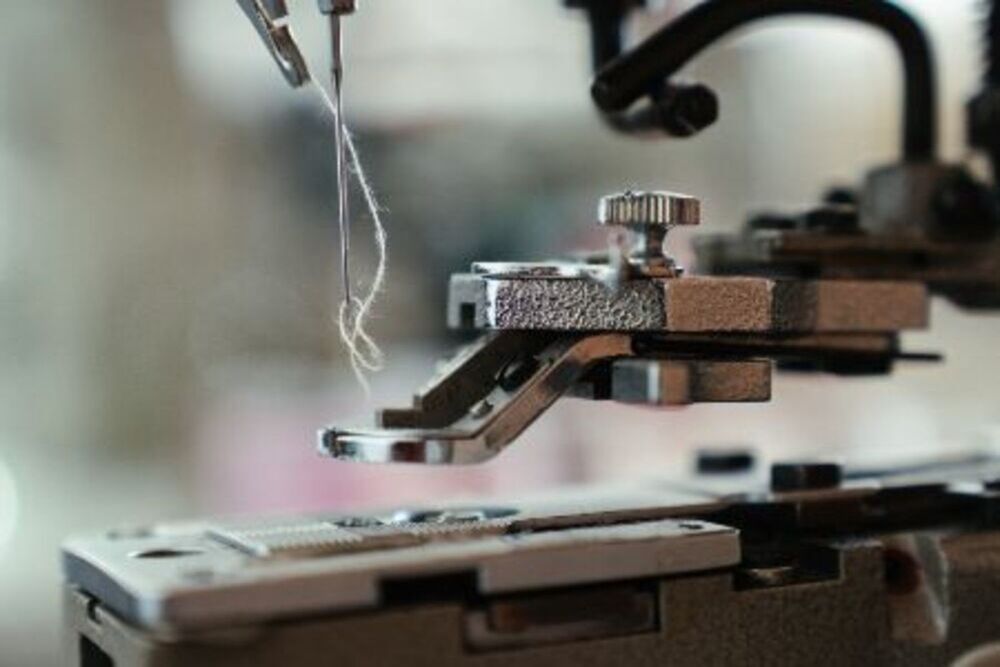Learning to use a sewing machine, whether new or out of storage, can be intimidating. Start by becoming acquainted with its spool pin, thread guide, bobbin winder and stitch adjustment buttons – they should all help get you going in no time!
Before beginning any sewing project that requires at least two layers, always test your machine using double fabric layers as an initial test.
Needle
Your best sewing and embroidery machine utilizes two threads – a top thread from its large spool, and the lower bobbin thread housed within its case under the needle plate – that must both be prepared before you can begin sewing.
Your project requires using the appropriate type of needle, with American labeling systems typically using eight to 19 needle sizes with 8 being fine needles and 19 thick heavy ones; European needle sizes range from 60 to 120; 60 being very fine needles while 120 thick heavy ones.
Remember to regularly change your needle. A dull needle can damage fabric and produce uneven stitches, so it is recommended that you change it every four or more hours of sewing or at the start of a new project.
Thread
Before beginning sewing, ensure the thread spool is connected to your machine and secured by attaching a spool cap (to keep thread from flying off while you sew) that should fit over its flat side and around its perimeter. This should help protect it while sewing.
Place a wound bobbin into a compartment beneath your needle (known as the bobbin case). Your machine should have an arrow showing which way the bobbin should move for effective unspooling. Finally, draw thread through an upper thread guide – usually metal parts sticking out at the top – which leads to another lower thread guide featuring an eyelet lever called the take-up lever.
Bobbin
Sewing machines use metal bobbins that can either be placed directly into the machine or placed inside a case and dropped onto its front surface (drop-in). Once dropped in, this thread can then be drawn up through needle thread to create stitches.
Your sewing machine should only accept certain types and sizes of bobbins, so it is essential that the one you use fits. From time to time, use a stiff brush to clean out your bobbin case from any threads or fluff that may have collected underneath its plate.
Your instruction manual will contain more specifics on how to thread a bobbin, but in general the thread should run counterclockwise.
Foot pedal
Long hours at the sewing machine can result in foot pain or cramps, to avoid this it is advised that both feet be switched every few minutes and pedal lubricated periodically as this will reduce wear and tear while making for smoother operation.
Foot controllers are essential elements of sewing machines. Consisting of a pedal that sits on the floor and connects via cord to the machine, when you press down with your foot it starts running – more pressure equals faster production! In addition, some foot controllers also contain capacitors to store electricity during shutdowns; should they fail, your pedal may stop functioning altogether.
Fabric
No matter if it’s sewing your own garment or just an ordinary seam, always double up fabric for extra support and to ensure a proper sewn seam. Otherwise it could become unmanageable for the machine and no work would get done at all!
As it’s best to practice on stiff cotton materials such as quilting cotton or calico, practicing on old clothes that no longer get worn can also provide you with valuable experience without spending too much money. This way, you can get acquainted with your machine while developing essential skills without breaking the bank!
If your fabric is giving you trouble, try taking steps such as taking out and reinserting it or altering your needle size accordingly to match thread thickness. Many small issues can often be resolved without needing professional services – saving both time and money in the process!

